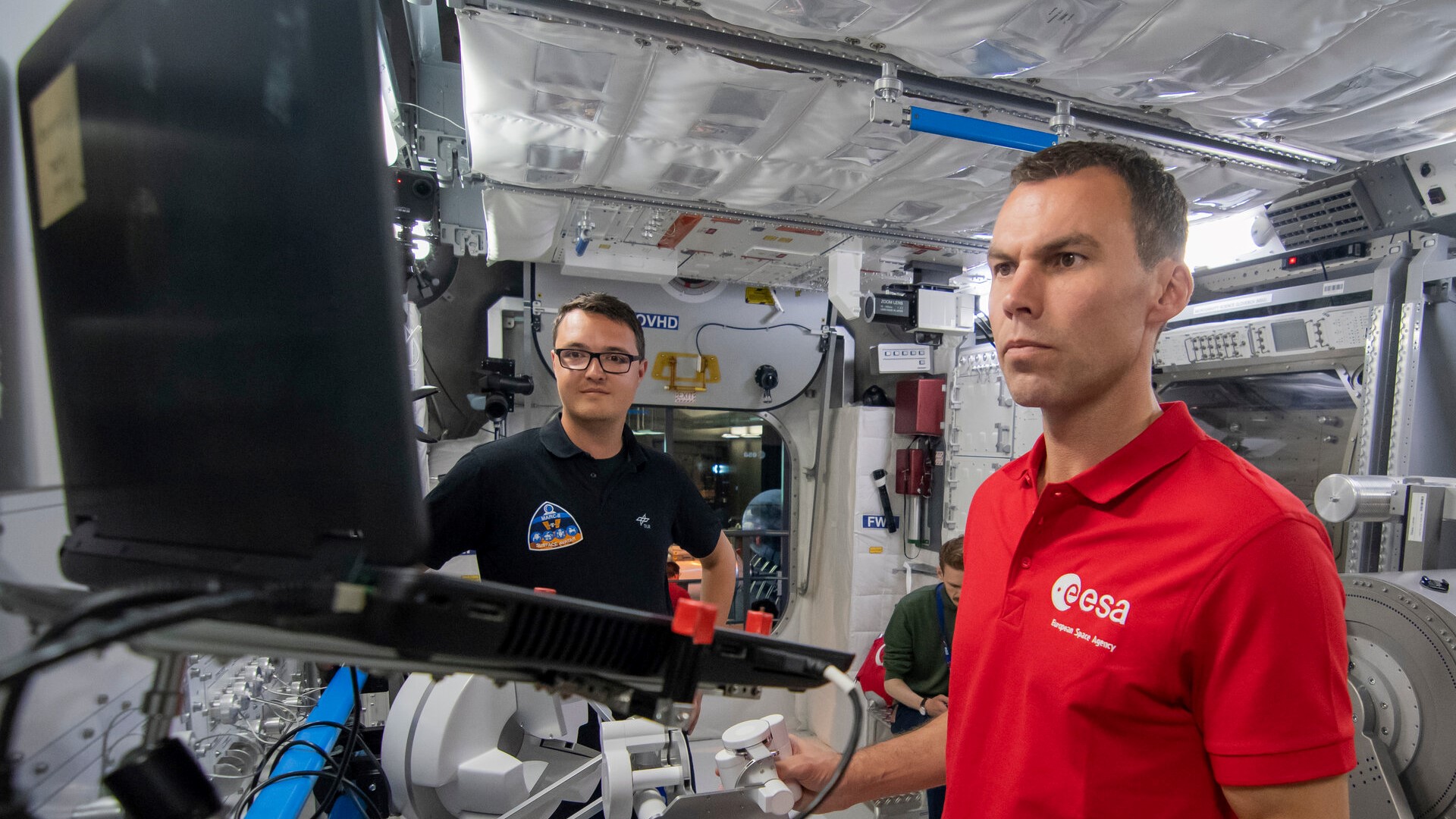Swedish astronaut 'fast-tracked' to join crew of upcoming private Axiom Space mission
Marcus Wandt will take a commercial spaceflight "fast track" opportunity to journey to the International Space Station with Axiom Space.

The European Space Agency (ESA) has called up a reserve Swedish astronaut to journey to space as part of the private space mission Axiom 3 (Ax-3).
Marcus Wandt, 43, will journey to the International Space Station (ISS) aboard the SpaceX Crew Dragon spacecraft no earlier than November 2023. Wandt and the other three members of the Ax-3 crew will spend 14 days aboard the ISS.
Wandt was selected as an ESA reserve astronaut in Nov. 2022 after a year-long selection process that saw 22,5000 applicants from EU member states put through their paces to become a new generation of ESA astronauts.
Related: The 1st photo of Earth from Europe's powerful new satellite is amazing
"You could instantly tell that there was something special about Marcus when he entered the room for his final interview to become an astronaut," ESA director of Human and Robotic Exploration, David Parker, said during a press conference in Stockholm, Sweden, on 16 June.
Wendt has unveiled his mission name and patch with the Swedish astronaut adopting the designation Munnin, which comes from the Old Norse word "munr" meaning "passion" or "emotion." In Norse myth, Muninn was one of two ravens that were the accomplices of the god Odin. Odin's other raven, Huginn, is the name of ESA astronaut Andreas Mogensen's mission aboard the ISS.
The patch of Wendt shows a raven soaring around Earth with references to the astronaut's homeland and his history as both a test pilot and a jet pilot.
Get the Space.com Newsletter
Breaking space news, the latest updates on rocket launches, skywatching events and more!
The new class of ESA astronauts includes members of the astronaut reserve like Wendt, career astronauts, and astronauts with physical disabilities who participate in a Parastronaut feasibility project. The Astronaut Class of 2022 started 12-month basic training at the ESA's European Astronaut Centre this spring.
"Marcus is following an intensive training program to meet the high standards required for space flight, both in Europe and in the USA," an ESA representative said during the press conference. "The training includes generic ISS training, Crew Dragon training, Columbus training, and training on the specific experiments Marcus will perform on board the ISS."
The fast track to space
The Swedish National Space Agency (SNSA) and ESA are working together to utilize Ax-3 as a "commercial fast-track" to support Marcus' mission to space.
"Sweden, an ESA Member State, was offered to take the opportunity of a vacant seat onboard an Axiom Space mission (AX-3), and it was then natural for ESA to call up Marcus from the reserve into the role of a project astronaut," the ESA representative added. "These missions provide short flight opportunities that are currently not available through NASA. They are highly concentrated with a comprehensive, dedicated science program. They also help prepare ESA for the post-ISS environment."
Wendt and future ESA astronauts who follow this commercial fast-track will be more "hands-on" than paying private astronauts and public figures that have journeyed to space as part of commercial missions.
The ESA said that the experiments Wendt and his fellow astronaut class members will engage in will push the frontiers of knowledge and inspire the next generation of scientists, engineers, and problem-solvers by creating a visible and positive role model for them.
"I've applied to become an astronaut because I love exploration, and I want to reach far out into the unknown," Wendt said upon his acceptance to the ESA's Astronaut Class of 2022. "I think that's a good way of learning about things we don't know that we want to learn about."
Join our Space Forums to keep talking space on the latest missions, night sky and more! And if you have a news tip, correction or comment, let us know at: community@space.com.

Robert Lea is a science journalist in the U.K. whose articles have been published in Physics World, New Scientist, Astronomy Magazine, All About Space, Newsweek and ZME Science. He also writes about science communication for Elsevier and the European Journal of Physics. Rob holds a bachelor of science degree in physics and astronomy from the U.K.’s Open University. Follow him on Twitter @sciencef1rst.









